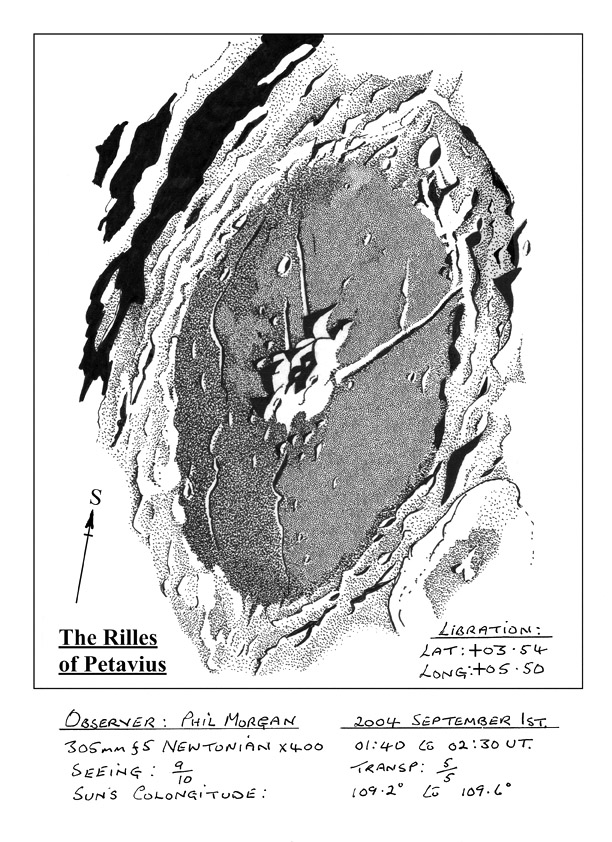Difference between revisions of "July 25, 2010"
| (One intermediate revision by the same user not shown) | |||
| Line 13: | Line 13: | ||
<br /> | <br /> | ||
<strong>Related Links</strong><br /> | <strong>Related Links</strong><br /> | ||
| − | Rükl plate [ | + | Rükl plate [https://the-moon.us/wiki/R%C3%BCkl_59 59]<br /> |
</td> | </td> | ||
</tr> | </tr> | ||
Latest revision as of 18:49, 13 October 2018
The Great Cleft
 drawing by Phil Morgan, UK |
One of the best views of Petavius that I have enjoyed was on the night of 2004 September 1st, when a combination of favourable libration in longitude and good seeing allowed me to record some of the fine rilles that cross the floor of this magnificent crater. However, my attention was (as always) drawn immediately to the Great Cleft that bisects the southwestern floor. In a small telescope, with south at the top, it always reminds me of a clock face reading ten past two! This large graben extends roughly 70 km from the 1,700m high central mountain complex to the famous wide double rampart, where it joins up with a similar structure that follows the curve of the inner western rampart. Under a lower angle of illumination the Great Cleft has raised banks in places. It has width of about 5 km and a depth of maybe 2 km. The true nature of the darker floor regions on the eastern side of Petavius remain something of a mystery, though they look like they are due to later outpourings of lava. The fact that the finer floor rilles and the suspected dome at the extreme southern tip are associated with them would seem to confirm this. Later studies of the best images show several other very fine rilles that I may have just picked out in the better moments, but my time was taken up just trying to get the shape of Petavius correct – never easy, even with a lot of practice!
|
Yesterday's LPOD: Crater Rays
Tomorrow's LPOD: Humor More My Fault
COMMENTS?
Register, Log in, and join in the comments.



